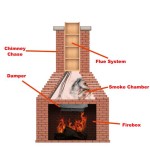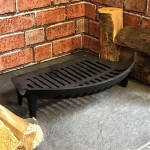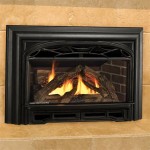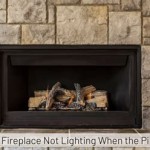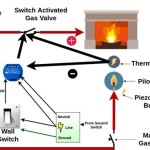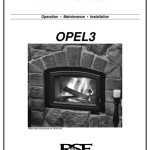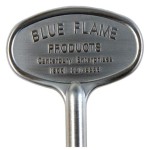Propane Tank Fireplace: A Comprehensive Guide
Propane tank fireplaces offer a versatile and convenient heating solution for both indoor and outdoor spaces. They provide the ambiance of a traditional wood-burning fireplace without the associated mess and labor. This article explores the components, operation, safety considerations, and maintenance aspects of propane tank fireplaces.
A propane tank fireplace functions by burning propane gas, a liquefied petroleum gas (LPG), to generate heat and flames. The propane is stored under pressure in a tank, typically a 20-pound tank for portable units or larger tanks for residential installations. The gas is then regulated and fed through a burner system, where it is mixed with air and ignited. The resulting flames dance across artificial logs or a bed of decorative glass, creating a visually appealing and warming effect.
Key Component: Propane Tank and Regulator
The propane tank is the essential fuel source for the fireplace. Tanks are typically constructed of steel and designed to withstand the high pressure of the liquefied propane. The size of the tank dictates the duration of operation before a refill is required. A 20-pound propane tank, commonly used for outdoor grills, can power a propane fireplace for several hours, depending on the heat setting. Larger tanks, such as those used for home heating, can provide significantly longer run times.
The regulator is a critical safety component that controls the flow of propane gas from the tank to the burner. It reduces the high pressure of the propane in the tank to a lower, more manageable pressure suitable for the fireplace's burner system. Regulators are typically factory-set to a specific pressure range and should not be adjusted without proper knowledge and tools. A malfunctioning regulator can lead to over-pressurization, resulting in dangerous gas leaks or an uncontrolled fire.
Propane tanks are equipped with a valve that allows the user to control the flow of propane. This valve should always be turned off when the fireplace is not in use and during tank replacement. The valve also serves as an emergency shut-off in case of a leak or other malfunction. When connecting the regulator to the propane tank, it is essential to ensure a tight, leak-free connection. Soapy water can be used to check for leaks around the connection points. Bubbles indicate a leak, and the connection should be retightened or the components replaced.
Storing propane tanks requires adherence to safety guidelines. Tanks should be stored upright in a well-ventilated area, away from direct sunlight and sources of heat or ignition. They should never be stored indoors or in enclosed spaces such as basements or garages. Damaged or corroded tanks should be taken to a qualified propane dealer for inspection and disposal.
Burner System and Ignition
The burner system is the heart of the propane fireplace, where the propane gas is mixed with air and ignited to create the flames. Burners are typically constructed of stainless steel or cast iron for durability and heat resistance. The design of the burner determines the shape and size of the flames. Some burners are designed to produce a realistic flickering flame, while others create a more uniform and controlled flame pattern.
The ignition system is responsible for igniting the propane gas. Many propane fireplaces use a piezo igniter, which creates a spark when a button is pressed. This spark ignites the propane gas, initiating the flame. Other fireplaces use an electronic ignition system, which uses a battery or electrical power to generate a spark. Electronic ignition systems often offer more reliable and convenient ignition than piezo igniters.
Some propane fireplaces are equipped with a pilot light, a small, continuously burning flame that ignites the main burner when needed. Pilot lights consume a small amount of propane gas, even when the fireplace is not in use. While convenient, pilot lights can be a potential source of gas leaks and should be regularly inspected. Newer models often use intermittent pilot ignition (IPI) systems, which only ignite the pilot light when the fireplace is turned on, reducing propane consumption and the risk of leaks.
The burner area should be kept clean and free of debris to ensure proper operation. Dust, cobwebs, and other obstructions can interfere with the flow of propane gas and air, resulting in an uneven flame or a complete shutdown. Periodically cleaning the burner area with a soft brush or vacuum cleaner can prevent these problems.
Safety Considerations and Maintenance
Safety is paramount when operating a propane tank fireplace. Propane gas is flammable and can be hazardous if not handled properly. Proper installation, operation, and maintenance are essential to prevent accidents and ensure safe operation.
Carbon monoxide (CO) is a colorless, odorless gas produced by the incomplete combustion of propane. Exposure to high levels of CO can be fatal. To prevent CO poisoning, propane fireplaces should be installed in well-ventilated areas and equipped with a carbon monoxide detector. The detector should be tested regularly to ensure it is functioning properly. Any symptoms of CO poisoning, such as headache, dizziness, nausea, or shortness of breath, should be taken seriously, and immediate medical attention should be sought.
Regular maintenance is crucial for ensuring the safe and efficient operation of a propane tank fireplace. The fireplace should be inspected at least once a year by a qualified technician. The inspection should include checking the burner system, ignition system, regulator, and propane tank connections for leaks or damage. Any damaged or worn parts should be replaced immediately.
The artificial logs or decorative glass should be arranged properly to allow for adequate airflow around the burner. Overcrowding the burner area can restrict airflow and lead to incomplete combustion, increasing the risk of CO production. The logs or glass should also be cleaned periodically to remove dust and soot, which can affect the appearance of the flames.
When not in use, the propane tank should be disconnected from the fireplace and stored in a safe location. The area around the fireplace should be kept clear of flammable materials, such as curtains, furniture, and paper. Children and pets should be supervised when the fireplace is in operation to prevent burns or accidental damage.
Portable propane fireplaces are designed for temporary use and should never be left unattended. They should be placed on a stable, level surface away from any combustible materials. The propane tank should be securely attached to the fireplace and protected from being knocked over. Before using a portable propane fireplace, always read and follow the manufacturer's instructions.
For permanent installations, professional installation is highly recommended. A qualified technician can ensure that the fireplace is properly connected to the propane supply and that all safety codes are met. Proper ventilation is essential to prevent the build-up of CO and other harmful gases. The fireplace should be inspected and serviced regularly to maintain its safe and efficient operation.
By understanding the components, operation, safety considerations, and maintenance aspects of propane tank fireplaces, users can enjoy the warmth and ambiance of a fireplace without the associated risks and inconveniences. Following these guidelines will help ensure a safe and enjoyable experience.
Troubleshooting common issues with propane fireplaces often involves checking the propane supply, ignition system, and burner. If the fireplace fails to ignite, first ensure that the propane tank is full and the valve is open. Check the ignition system to ensure it is producing a spark. If the burner is clogged, clean it with a soft brush or vacuum cleaner. Consult the manufacturer's instructions for specific troubleshooting steps.
Many modern propane fireplaces come equipped with safety features such as oxygen depletion sensors (ODS). These sensors monitor the oxygen levels in the room and automatically shut off the fireplace if the oxygen level drops below a certain threshold. This feature helps prevent CO poisoning by ensuring that the fireplace only operates in a well-ventilated environment.

Pin By Windean Dahleen On My Home Ideas Metal Fire Pit Outdoor Propane Fireplace

Used Propane Tank Fireplace Diy Wood Stove Gas Bottle Burner Chiminea Fire Pit

Firepits Repurposed Propane Tanks Gas Bottle Wood Burner Welding Projects Garden Design

Propane Tank To Chimney Cooker Gas Fire Pit Table Diy Rocket Stove Art

Propane Plus Tank Sizes Above Or Underground Installation

Turn A Propane Tank Into Chiminea Fire Pit

Comparing Wood And Propane Heat Tiny Stove

How To Hide A Propane Tank From Your Patio S Fire Pit The Diy Playbook

Estes Square Propane Fire Table Real Flame

Chiminea Propane Tank Diy Trees To Plant Wood Burner

